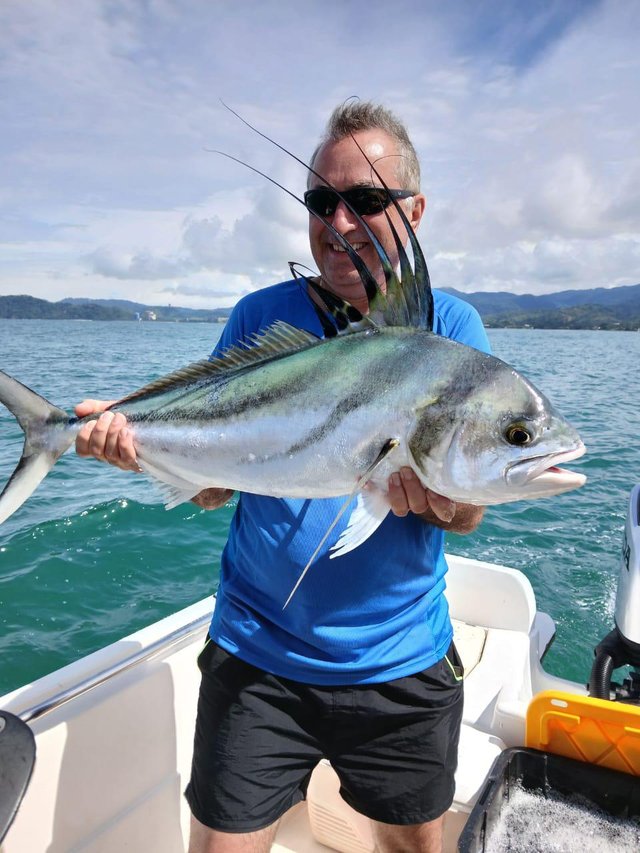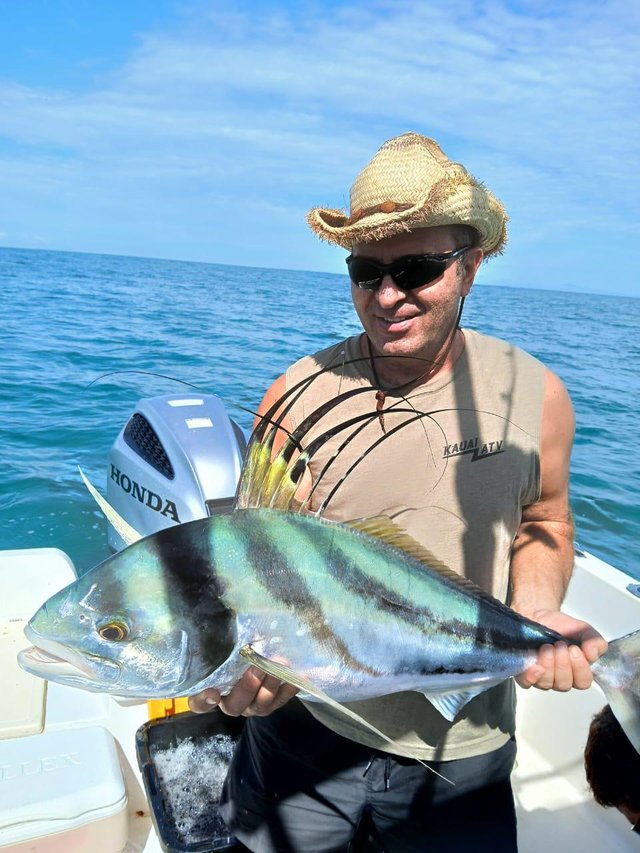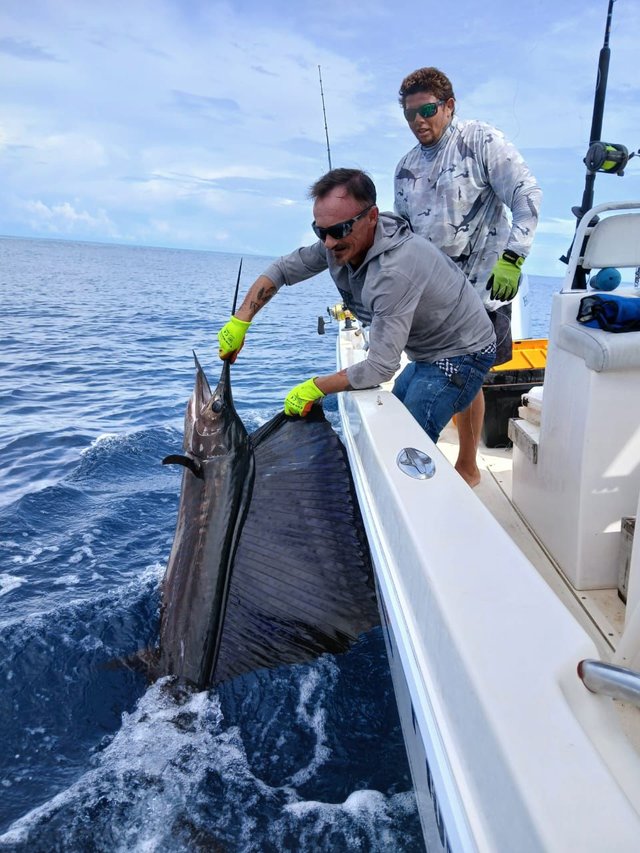Why Costa Rica is a Leading Destination for Sportfishing Conservation
Costa Rica, known for its lush rainforests and tropical beaches, has long been a paradise for eco-tourism. However, beyond the forests and beaches, Costa Rica is also renowned as one of the world’s premier sportfishing destinations. This small Central American country attracts anglers from around the world, eager to reel in trophy fish like marlin, sailfish, and roosterfish. But Costa Rica’s commitment to sportfishing goes beyond adventure—it’s deeply rooted in conservation efforts to preserve its rich marine biodiversity. In this article, we’ll dive into why Costa Rica stands out as a leader in sportfishing conservation, blending eco-friendly policies with world-class fishing experiences.
 )
)Costa Rica’s Unique Marine Ecosystem
Costa Rica’s coastal regions, nestled between the Pacific Ocean and the Caribbean Sea, boast an impressive array of marine habitats. These areas are teeming with biodiversity, offering habitats for hundreds of fish species, corals, and other marine life. Costa Rica’s waters serve as vital breeding grounds for various fish species, and they’re essential to both the environment and the economy. Preserving this ecosystem is a priority, ensuring that future generations can enjoy the country’s natural beauty and vibrant marine life.
The Rise of Sportfishing in Costa Rica
Sportfishing has steadily grown in popularity over the years, with Costa Rica emerging as a sought-after destination for fishing enthusiasts. Initially a niche activity, sportfishing has become a major draw for tourists, drawing thousands of anglers annually. Many are attracted not only by the thrill of the catch but also by Costa Rica’s reputation as a sustainable Costa Rica Fishing Experts hotspot.
Types of Fish in Costa Rica’s Waters
Costa Rica’s waters are a haven for some of the world’s most prized game fish. The most popular catches include marlin, sailfish, roosterfish, and yellowfin tuna. These species are celebrated for their fighting spirit and size, making them ideal for sportfishing. The availability of different fish varies by season, giving anglers something new to look forward to year-round. For example, blue marlin peaks in April and May, while sailfish season typically spans December to April.
 )
)Importance of Sustainable Sportfishing
Sustainable sportfishing, often referred to as "responsible fishing," is crucial to preserving Costa Rica's fish populations. The principles behind sustainable sportfishing include limiting catches, employing catch-and-release techniques, and respecting fishing quotas. These practices help protect fish populations from overfishing, ensuring that the marine ecosystem remains balanced and thriving. Anglers are encouraged to adopt these practices, aligning with Costa Rica’s eco-friendly approach to tourism.
Costa Rica’s Sportfishing Regulations
Costa Rica takes marine conservation seriously and has implemented numerous regulations to ensure responsible sportfishing. These include catch limits, restrictions on fishing certain species, and mandatory catch-and-release policies for certain game fish like sailfish and marlin. Such rules are enforced by the Costa Rican Institute of Fisheries and Aquaculture (INCOPESCA), ensuring that sportfishing practices do not harm the natural ecosystem.
Catch-and-Release Culture in Costa Rica
Catch-and-release has become a cornerstone of Costa Rican sportfishing. This practice involves catching a fish, photographing it if desired, and then releasing it back into the water unharmed. Not only does this allow the fish to continue contributing to its ecosystem, but it also preserves populations for future anglers. Thanks to this culture, Costa Rica has been able to maintain healthy fish stocks while promoting tourism.
Marine Protected Areas (MPAs)
Costa Rica has established numerous Marine Protected Areas (MPAs) as part of its conservation efforts. These zones prohibit or restrict certain fishing practices to protect marine life. MPAs like Cocos Island National Park serve as safe havens for marine species, allowing them to thrive without human interference. These protected areas are crucial in supporting biodiversity and ensuring sustainable sportfishing. Known for its laid-back vibe and consistent fishing, Tamarindo is a great spot for family-friendly charters.
Community Involvement in Conservation
Costa Rica’s local communities play a significant role in marine conservation. Community-led initiatives and partnerships with non-profits help educate locals and tourists alike on sustainable practices. By involving communities, Costa Rica has created a network of conservation advocates, ensuring that the values of responsible fishing are deeply ingrained in its culture.
Sportfishing Tournaments and Conservation Efforts
Costa Rica hosts several sportfishing tournaments each year, such as the Offshore World Championship and the Los Sueños Signature Triple Crown. These events attract anglers from across the globe and promote sustainable fishing practices, such as catch-and-release. Tournaments also generate awareness and funds for conservation efforts, reinforcing Costa Rica’s commitment to protecting its marine life.
Economic Benefits of Sustainable Sportfishing
Sustainable sportfishing has proven to be a lucrative industry in Costa Rica, contributing significantly to the local economy. The tourism associated with sportfishing generates revenue, supports jobs, and drives economic growth. Local guides, boat captains, and small businesses all benefit from the influx of sportfishing tourists, creating a sustainable economic model.
 )
)Challenges in Sportfishing Conservation
Despite Costa Rica’s proactive approach to conservation, challenges remain. Illegal fishing, overfishing, and pollution threaten marine ecosystems. The Costa Rican government continues to work on strengthening enforcement to address these issues, but tackling such challenges requires constant vigilance and cooperation between public and private sectors.
Success Stories and Conservation Milestones
Costa Rica has achieved several milestones in sportfishing conservation, with populations of certain fish species rebounding thanks to strict regulations and MPAs. Initiatives like the "Responsible Fishing Areas" program have been particularly successful, reducing overfishing and preserving fish stocks for future generations.
Why Costa Rica Leads in Global Conservation Efforts
Costa Rica has earned international recognition for its commitment to environmental sustainability. It is seen as a model for balancing tourism with conservation, influencing other countries to adopt similar practices. Costa Rica’s dedication to protecting its marine resources cements its status as a global leader in sportfishing conservation. Family fishing trips in Costa Rica can range from short half-day inshore trips to full-day offshore adventures.
Conclusion
Costa Rica’s focus on conservation has solidified its status as a premier sportfishing destination. Through catch-and-release policies, protected areas, and community involvement, Costa Rica ensures that its marine resources are preserved for the future. For anglers who value both the thrill of the catch and the well-being of marine ecosystems, Costa Rica offers an experience that’s both exhilarating and eco-friendly.
FAQs
1. What makes Costa Rica’s sportfishing sustainable?
Costa Rica’s emphasis on catch-and-release, fishing quotas, and protected areas helps maintain fish populations, ensuring sustainable sportfishing.
2. What fish species are popular for sportfishing in Costa Rica?
Species like marlin, sailfish, roosterfish, and yellowfin tuna are among the most popular for sportfishing in Costa Rica.
3. Are there any sportfishing tournaments in Costa Rica?
Yes, Costa Rica hosts tournaments such as the Offshore World Championship and Los Sueños Signature Triple Crown, which promote sustainable practices.
4. How does sportfishing benefit Costa Rica’s economy?
Sportfishing generates revenue, supports local employment, and fosters economic growth in communities through tourism.
5. Can tourists participate in conservation efforts?
Yes, many tourists engage in conservation by following catch-and-release policies, supporting eco-friendly tours, and donating to marine preservation programs.